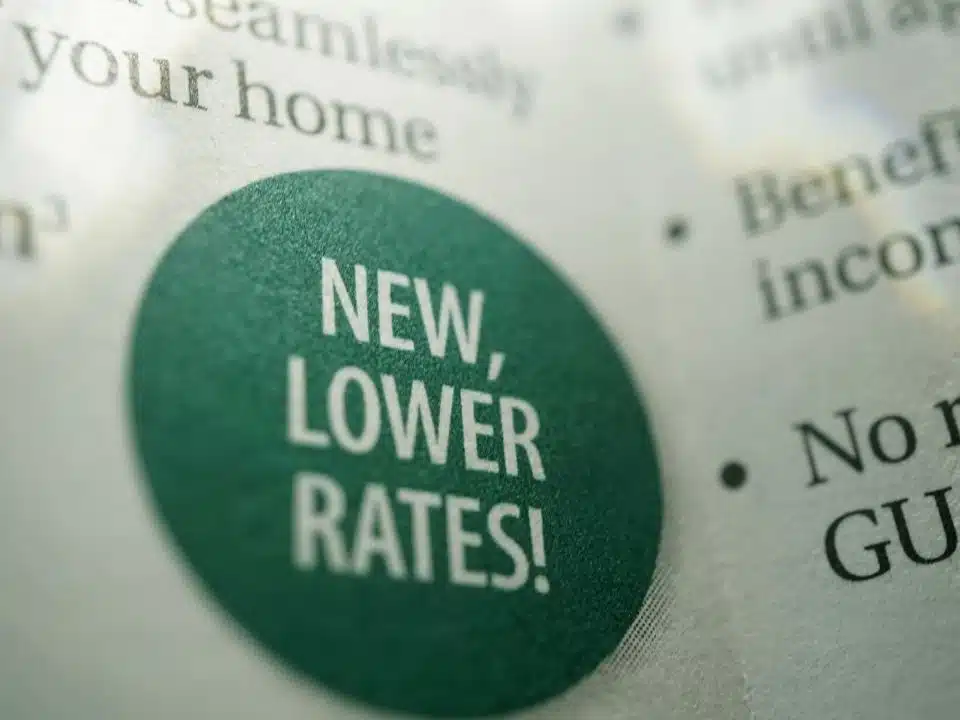The ABS’s most recent findings report a household debt growth of 7.3%, while disposable income is only growing at a rate of around half of the debt growth, at 3.7%. As a collective, if we didn’t feel the pressure from our debt 10 years ago, it’s hard not to feel it today – even if debt is a necessity for many of our life ventures, from surviving financially as a single mother, needing a car for work or to get your family into your own home.
We know that growing our income and funnelling more money into paying our debts off faster is a surefire approach to optimising our finances, but we can’t just desire our way into more cash flow or gain instant passive income streams. However, there are alternatives to finding debt relief.
Debt consolidation – rolling multiple debts into a single facility – can be a smart way to simplify your repayments, reduce interest and help you pay less for your loans over their lifespan. Having your debt in one place also helps with mental clarity and organisation, but it isn’t a silver bullet. So, what is debt consolidation, and can it help you pay off your loans faster?
Best Financial Planners are dedicated to helping Australians build wealth and live financially free, no matter what their current circumstances look like. Our team has considered the most pressing financial advisor questions. In response, we’ve created this guide to explain how consolidation works in Australia, when it can speed up your payoff timeline, how you can use debt consolidation to optimise your finances and the traps to avoid.
What’s involved in debt consolidation?
Debt consolidation just means replacing multiple debts with one loan. So you can combine your credit cards, Buy Now Pay Later, personal loans and even ATO debt into one facility that will hold all or most of your debt. It’s a type of refinancing you can do in a couple of ways. First, you can consolidate debt through an unsecured personal loan, which is used to pay out higher-rate debts. These often come with a fixed rate or are over a fixed term.
Secondly, debt consolidation can be done through a credit card balance transfer. These often come with a low or 0% promotional rate for a set period, so you can make use of a low-interest rate period to pay your principal loan off faster.
If you have a mortgage, another debt consolidation option is a mortgage refinance or top-up that absorbs other debts into your home loan. Your mortgage loan balance will increase, but overall, you could be better off with a higher mortgage at a lower interest rate than your previous loans. All of these options have different costs and typical interest rates and will depend on your current financial situation and loan portfolio.
When consolidation can help you get out of debt faster
Debt consolidation loans can accelerate your payoff, but only if they meaningfully lower your effective interest rate. Consolidation can also help you pay off your debt faster if it shortens your repayment term. And if it does both, and if you make (and keep) a plan to avoid re-borrowing, you’ll be well on your way to a debt-free life and start proactively planning for retirement. We know we’re still speaking in financial lingo, so here is a breakdown of what to look for without the bells and whistles.
Lower rate, same or shorter term
Some loans are designed for high-interest, like credit card debt. Identify if you have any high-rate loans, as these will be key loans to consolidate into a lower-rate instalment loan with a comparable or shorter term, which can reduce interest and push more of each payment toward principal.
Look for promos with 0% balance transfer
Transferring your loan balance to a new lender can dramatically cut your loan interest for the first period, often between 6 to 24 months. If you can manage to pay the transferred balance off before the promo ends and avoid spending on the new card, you can reach debt-free sooner. If you only make minimum repayments, though, and add purchases onto the new loan, the benefit can weaken fast and may not be worth it anymore.
A single fixed repayment builds momentum
Many people find it easier to budget around one fixed repayment. If this is you, consolidating your debt may be a good option simply for the clarity in payments it can offer. You’ll find it easier to avoid missed payments and late fees and improve repayment history reporting over time. Once you get into a routine with budgeting for one repayment a month, you’ll build momentum and may manage to save for a house deposit or any other financial goals.

When consolidation won’t help you pay off debt faster
On the other side of the coin are circumstances where you’re not helping yourself pay off your debt faster, just repackaging the problem. Ultimately, to escape getting stuck in a cycle, choosing a financial advisor fluent in loans will help you consolidate debt in a way that truly serves you. Here are some of the things we look to avoid in debt consolidation:
A longer term that hides a higher total cost
While loans should absolutely be serviceable, be careful of stretching a short-term debt over many years. These shrink the monthly bill but increase the total interest paid, delaying your debt-free date.
Securing previously unsecured debts against your home
If you refinance a car loan, credit card or personal loan balance into your mortgage, your home becomes a liability, and you may put your home at risk if you can’t keep up. This is another reason to tread carefully and maintain a payoff plan that is designed to reduce the consolidated portion quickly.
The other side of balance transfers
Promotional rates end, sadly. As the attractive rate that pulled you in can become the opposite of attractive. So if you still owe a balance when the intro period expires, or if you add new purchases that accrue interest immediately, the debt can end up lingering longer and at a higher rate than you started with, keeping you stuck in the cycle.
Not addressing spending
Consolidation frees up credit lines. This is fundamentally a good thing, but if you keep using them, you can end up with more debt than before (the consolidated debt plus the newly accrued debt). Paying off your debt and living financially free is as much of a mindset shift as a logistical one, so do what you need to do in order to drop unnecessary spending. For example, if you need to take out an unsecured loan to finance a pool, it’s worth taking a moment to think about whether this is in your best interest long-term.
Debt consolidation – smaller than the sum of its parts
Typically, when we talk about things joining forces, they become more powerful. But with debt, you’re battling varying lenders’ requirements, deadlines, rate changes and the mental battleground of multiple debts. Debt consolidation allows you to have one single debt, from one lender, within one repayment system.
But the true power of debt consolidation lies in finding and acquiring the refinancing option that will offer you the lowest interest rate and a reasonable term. When this happens, all of your debt is calculated against the best rate, and you’re in a much better position to pay off what you owe faster.
The process materialises through balance transfers, mortgage top-ups or personal loan refinancing. Remember, mortgage-based consolidation calls for extra caution to prevent a cheap rate from becoming expensive over decades and risking your home itself. Finally, eliminating your unnecessary spending (if it requires you to borrow) is the final piece to becoming free from debt. Done right, consolidation turns a messy pile of debts into a straight line, helping you cut off the ball and chain of debt much quicker. But done poorly, it just repackages the problem to another lender.
For any questions about debt consolidation or your refinancing options, contact us today to speak with a trusted financial advisor.




